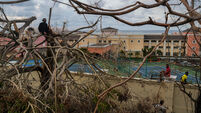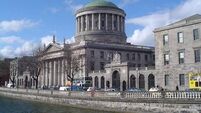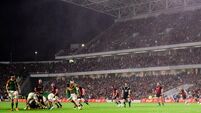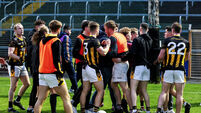Rescuers continue search for quake survivors
Soldiers digging through the ruins of crushed buildings today pursued the faint voices of survivors of India’s devastating earthquake, bolstered by the rescue of three people from the rubble 36 hours after the disaster.
Home Minister Haren Pandya of the western state of Gujarat said 6,072 people were confirmed dead in Friday’s quake. The toll was likely to go up to at least 10,000, he said.
‘‘There are many bodies buried inside and there are many places with which we have no communications. But our projection is that the toll would be 10,000.’’
Authorities will know by tomorrow if any more people are alive under the rubble, Pandya said. The emphasis will then switch to clearing the rubble and removing the dead bodies, he said.
Police were also hunting for some 200 inmates who escaped from a collapsed jail, Pandya said.
Meanwhile, another tremor of magnitude 6 shook the area this morning. It was the largest aftershock yet, but no new damage was reported.
The quake was centered 12 miles from the epicentre of Friday’s 7.9 temblor.
Since Friday, more than 275 aftershocks have been reported, of which 20 were above magnitude 5.
In the newly developed portion of Bhuj, the smell of decomposing bodies permeated the air, tinged with lime and chlorine disinfectants. People moved possessions from their homes and set up makeshift camps in two of the open areas, using bed sheets as tents.
In most buildings, the first floor had collapsed while the intact upper stories teetered precariously.
At least three separate rescue operations were launched where residents reported hearing sounds of people from under the rubble, including at the Vaibhav Lakshmi apartments, a five-storey building that completely collapsed in a 15ft high pile of debris.
‘‘We don’t know who may be in there, but we heard sounds,’’ said junior warrant officer R.P. Sachan. ‘‘So many dead bodies have been brought out of this building.’’
Sachan and his crew were using new cutting equipment, including pneumatic jacks, collected from one of the several consignments brought in by air force planes.
In one place, rescuers made eye contact with a trapped woman, Naina Badrasen Aur, and her 18-month-old daughter, Namrata, but were not able to rescue them immediately.
On Saturday, a unit of soldiers, among the 5,000 Indian troops deployed in Gujarat, rescued two men and a girl after digging through the fallen masonry of their homes in Bhuj, Captain Amartej Singh of the 108 Engineers unit said.
Pandya, the state’s interior minister, said even though massive national and international aid had arrived, authorities urgently need more cranes, gas cutters, vehicles, bulldozers, blankets and medical equipment.
‘‘The quantum of our need is so much more than what we have,’’ he said.
Indian Agriculture Minister Bhaskar Barua said the International Committee of the Red Cross had offered thousands of blankets, the Swiss government had sent sniffer dogs and assistance was also being accepted from the United States, Russia, Germany and Turkey. Norway and China had offered monetary aid, and Taiwan was prepared to send rescue workers.
Japan offered to send 35 rescuers but they were being held up by bureaucratic delays in India, Shusaki Hirashima, a Foreign Ministry official, said in Tokyo.
Relief planes were today landing every 10 minutes at Bhuj airport. Soldiers unloaded supplies of fuel, food and construction equipment to be used in rescue and recovery effort. The passenger terminal of the airport was flattened, but the runway survived.
State carrier Air India announced it would waive cargo charges for relief material from anywhere in the world destined for the quake site. Jet Airways, a private Indian carrier, was also transporting relief supplies free of charge.
More than half the houses in Bhuj, a city of 150,000 people, were reduced to rubble and the rest were damaged. In the congested old part of the city, dogs, pigs and cows foraged for food in streets made narrower by mounds of rubble.
Friday’s quake - India’s strongest in more than 50 years - struck on Republic Day, a national holiday. It shook the earth for more than 1,200 miles.
Among the dead were 50 teachers and 400 children parading through the narrow old city streets of Ajnar during the Republic Day celebrations. They were killed almost instantly when the earthquake knocked the buildings down onto them from either side, said Bangaru Laxman, president of the Bharatiya Janata Party of Prime minister Atal Bihari Vajpayee. Ajnar is 30 miles southeast of Bhuj.
The quake was the most powerful to strike India since August 15 1950, when an 8.5-magnitude temblor killed 1,538 people in northeastern Assam state.














